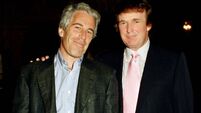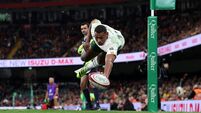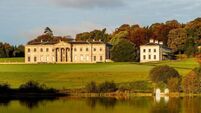Veteran artist who’s earned his stripes
SEÁN SCULLY’S current exhibition at the Kerlin Gallery in Dublin, Cut Ground, features a series of new paintings in the style he is renowned for: soft-edged bands of extravagant colour on canvasses so large that the space can accommodate only seven of them.
At 66, Scully might well be described as a veteran artist. But he still cuts a dynamic figure. He’s a hard man, a black belt in karate who many find intimidating on first encounter, not least because of what he calls the “fish and chips” accent acquired in his years growing up in London. Get to know him a little better, however, and what shines through is his innate intelligence. His paintings may seem simplistic, but their construction is backed up by a vast knowledge of art history, on which Scully has written and lectured throughout his career.
















